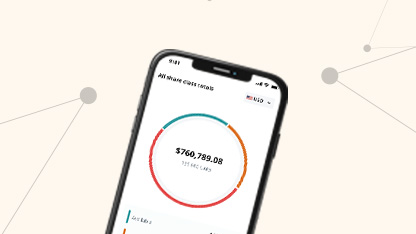As we settle into another year, you may have closed out the last one in a panic. End of year planning can be a nightmare for some, especially when it involves employee stock plans. With multiple things to consider, it can be tricky to know what to prioritize.
Luckily, Henrik Patel, the Global Head of Employment, Compensation and Benefits at White and Case LLP, has got the answers. In his guest blog, he shines a light on what to keep in mind for your employee stock plans to make sure you’re always one step ahead.
Inflation, labor shortages and pricing pressures
Some things are pretty much guaranteed, such as inflation and a competitive labor market. For most companies, their employees are their most valuable asset and with the growing cost that’s involved in recruiting new hires, more and more companies are looking for ways to properly incentivize key talent.
As such, equity awards will continue to increase in size and value. This also means that performance metrics will have to continue to adapt and change over time as inflation will make some historic measures too easy.
Additionally, tax reform is an everchanging beast. While you can never be certain what Congress may pass year on year, changes in tax rates can always be expected, particularly for those affecting companies and high earners. This bears consideration when you measure the incentive effect of future equity awards to the top of the house.
Examine your performance metrics
The end of the year is the best to time to measure performance. With a substantial majority of the year fully accounted for, many companies who have been tracking performance awards for accounting purposes know the likely payout ranges for awards.
However, now is also the time to consider how well these expected payout ranges on performance awards match the companies’ actual performance — as well as the market’s perception of such performance.
Additionally, deciding whether the metrics used to measure that performance were actually appropriate allows compensation committees to consider their narratives for the upcoming proxy season and make appropriate adjustments as necessary.
If there is a disconnect in the performance award achievement and the expected payout from such awards, the end of the year is the time to consider whether alternative performance metrics should be implemented for the following year.
Henrik Patel, Global Head of Employment, Compensation and Benefits, White and Case LLP

Give yourself time to count your share reserve
The most important year end planning aspect is to take stock of your equity plan share reserve numbers.
For companies that have fiscal calendar years, figuring out how many available shares are left in the share reserve now leaves plenty of time to go to stockholders in connection with the annual meeting for an increase in the share reserve or to put in place a new omnibus plan.
However, the counting should not end at the share reserve numbers.
Most plans have a variety of share limits to abide by, including limits on certain types of equity awards, such as incentive stock options, that need to be tracked separately from the overall share reserve.
Additionally, many plans contain different counting requirements for full value awards, such as restricted stock, RSUs and PSUs as opposed to options or SARs.
Generally such full value awards count 2-3 times as much as options or SARs. Numerous companies have run into the problem of thinking they have had plenty of shares available in the authorized share reserve on an aggregate basis only to discover that due to their plan’s internal counting rules and the increased prevalence of full value awards, they need to get additional shareholder approval even sooner than expected.
Additionally, you should consider tracking various other limits, for instance awards that vest in less than 1 year which are usually limited to 5% or less of the aggregate share limit. Given the tight labor market and increases in new hires since the pandemic, it is likely some companies have used up more of this limit than in prior years, as normally, new hires awards may vest based on their start date, which may be before the date of grant.
The time to do all of this counting is now – before the usual annual equity award grants in the first half of the next year, especially considering additional awards may be necessary to properly incentivize key personnel next year.
Always be prepared
Global Shares works to create solutions for companies of sizes and types around equity compensation. We understand the importance of preparation. As the saying goes, ‘fail to prepare, prepare to fail’. That’s why we can help you get your employee share plans in order to make sure you succeed year after year. Get in touch today to find out more.
Any views expressed in this publication are strictly those of the authors and should not be attributed in any way to White & Case LLP.
This publication contains general information only and J.P. Morgan Workplace Solutions is not, through this article, issuing any advice, be it legal, financial, tax-related, business-related, professional or other. J.P. Morgan Workplace Solutions’ Insights is not a substitute for professional advice and should not be used as such. J.P. Morgan Workplace Solutions does not assume any liability for reliance on the information provided herein.



